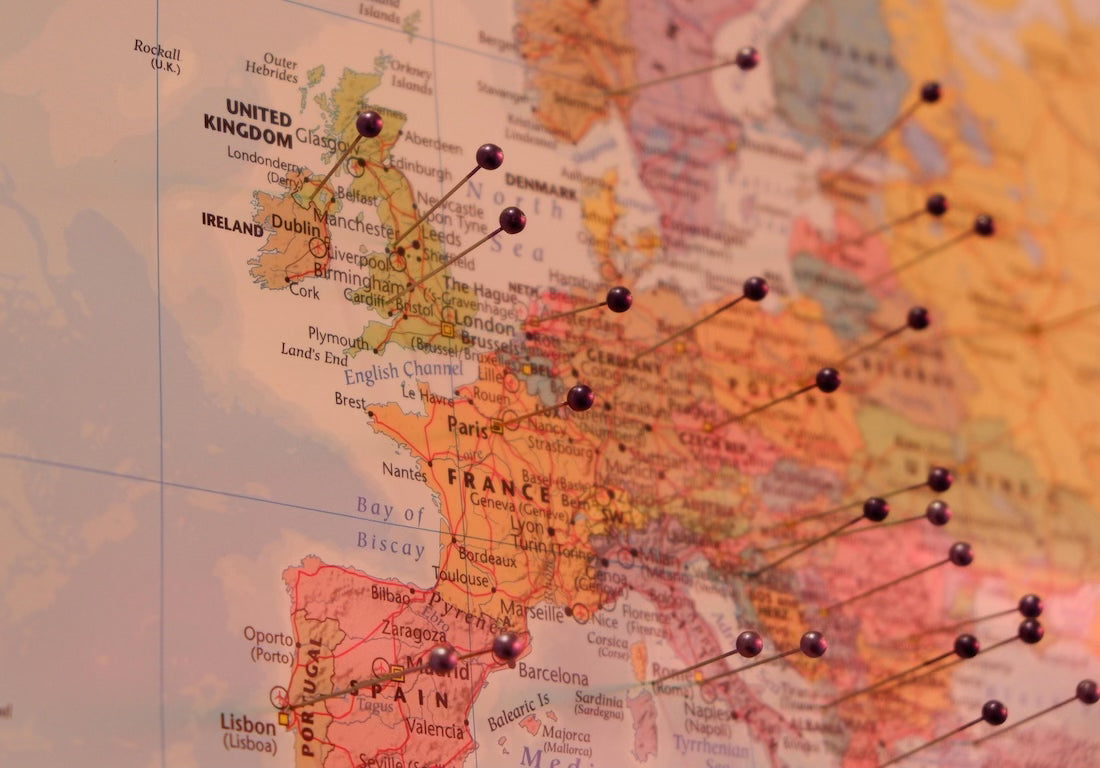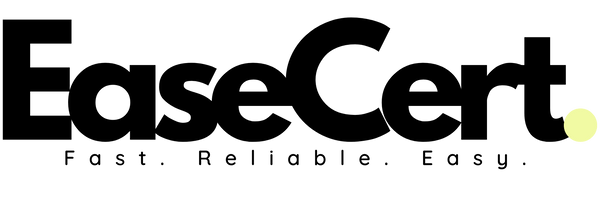
Europe’s Most Active Product-Safety Authorities in 2024 – What It Means for GPSR Compliance
As the EU’s product-safety landscape evolves under the new General Product Safety Regulation (EU) 2023/988, understanding where enforcement is most active has never been more important.
The European Commission’s latest Safety Gate 2024 Annual Report highlights record levels of market surveillance across Europe, confirming that several Member States now lead the EU in proactive product testing, documentation checks, and consumer protection actions. This article reviews the most active national authorities, their implications for compliance planning, and what brands and importers should do to stay ahead under the General Product Safety Regulation (GPSR).
Overview
According to the European Commission’s Safety Gate 2024 Annual Report, European market-surveillance authorities filed a record 4137 alerts for dangerous non-food products in 2024 – nearly double the figure from 2022. This surge reflects strengthened enforcement under the General Product Safety Regulation (EU) 2023/988 (GPSR), which became fully applicable on 13 December 2024.
The GPSR applies directly to all consumer products that are not subject to sector-specific EU legislation. It enhances traceability, imposes clearer obligations on manufacturers and online-marketplace operators, and empowers authorities with stronger recall mechanisms. For more details, see what EaseCert offers or review our EU compliance guide.
Learn more about the regulation on the Commission’s Product Safety Legislation page.
Top 6 Most Active Market-Surveillance Authorities in 2024
Based on the Commission’s official country-by-country data (Report pp. 11–12), the following Member States issued the highest number of validated Safety Gate alerts in 2024:
- Italy – 1089 alerts: Italy remained the most active notifier, responsible for over 25% of all EU product-safety alerts. Its Ministry of Enterprises and Made in Italy leads large-scale inspections, particularly in toys, textiles, and cosmetics.
- Germany – 471 alerts: German authorities (BAuA and state-level MSAs) focus on labelling, CE/GPSR compliance, and cross-border enforcement.
- Sweden – 386 alerts: The Swedish Consumer Agency and Chemicals Agency (KEMI) are active in chemical-risk enforcement and testing of cosmetics and electronics. See our guide on REACH, RoHS, and POPs compliance.
- Hungary – 365 alerts: Hungary’s Consumer Protection Department increased checks for children’s products and clothing.
- Czechia – 332 alerts: The Czech Trade Inspection Authority (CTIA) carried out extensive laboratory testing and coordinated cross-border enforcement across Central Europe.
- France – 315 alerts: France’s DGCCRF prioritised traceability and language accuracy in labelling for electrical and childcare products.
Together, these six Member States were responsible for over 60% of all EU alerts in 2024.
Why This Matters for Manufacturers and Importers
The likelihood of inspection or recall is not uniform across Europe. Products sold in high-alert Member States face greater scrutiny, particularly where:
- The EU Responsible Person (RP) address is missing or unclear;
- Labelling omits required national languages;
- The Declaration of Conformity cannot be presented immediately;
- Safety or chemical documentation is incomplete. See GPSR technical file documentation guide.
Under Article 9 of the GPSR, safety information must appear “in the language or languages easily understood by consumers of the Member States where the product is made available.” See the Commission’s Your Europe – Labels and Markings guidance.
Balancing Language Coverage and Label Space
EU product rules require that essential safety information be accessible to consumers in the countries where a product is made available. At the same time, businesses often face practical limits on label size and layout. In these situations, a proportionate approach may be used to plan how information is presented, provided the outcome remains clear, legible, and useful for consumers.
In practice, companies frequently prioritise languages on pack using objective criteria such as market size, distribution footprint, product risk profile, and physical space constraints. Where full multilingual text cannot reasonably fit, businesses may provide additional translations through an accompanying document or a multilingual leaflet, so that consumers can still access the required information.
Whatever approach is chosen, keep a written rationale that explains how language coverage was determined and how consumers can obtain the information they need. This rationale should be included in the product’s internal documentation, for example the risk analysis and the technical file, and it should stay consistent with the information on the product and its packaging.
- Plan language coverage using an objective, proportionate method (market size, distribution, product risk, and space).
- Use on-pack text for the highest-priority markets and provide remaining translations via an accompanying document.
- Document the reasoning in the compliance dossier, including which languages appear on pack and which are provided through alternative means.
- Review legibility and clarity so that consumers can easily understand warnings and instructions.
For practical guidance on documenting decisions, see the risk analysis process and the technical file and product compliance guide. For labelling structure and examples, see labelling requirements for GPSR compliance.
Linking Enforcement Activity and Market Size
When combining enforcement activity with consumer-market size, the eight most strategically significant Member States for GPSR compliance are:
- Germany (84 million consumers)
- France (68 million)
- Italy (59 million)
- Spain (48 million)
- Poland (37 million)
- Czechia (10.9 million)
- Sweden (10.6 million)
- Hungary (9.6 million)
These markets combine high enforcement levels with large populations, making them priority countries for multilingual labelling and documentation.
EaseCert’s Recommended Dual Approach
Under Article 9 of the General Product Safety Regulation (EU) 2023/988, product safety information must be provided in a language easily understood by consumers in each Member State where the product is made available. When space or design limitations prevent full multilingual labeling, the regulation allows use of an accompanying document and digital access points such as QR codes or web links. See the Commission’s Product Safety Legislation pages for context.
1) Primary (On-pack) information
Provide on-pack text in a representative selection of official EU languages, giving priority to Member States with larger consumer populations and higher market presence within the Union. Including these on the primary packaging ensures broad linguistic accessibility and adequate coverage across major European markets. For label planning and structure, see Labelling requirements for GPSR compliance.
2) Supplementary (accompanying) information
Use an accompanying document to carry the full set of warnings, instructions, traceability details, and any other mandatory information that does not fit on pack. The accompanying document should ship with the product and remain consistent with the internal technical file. Guidance: GPSR technical file documentation guide, EU GPSR technical file and product compliance guide, The GPSR risk analysis process.
3) Documentation and rationale
- Maintain a clear register of which languages appear on pack and which are provided in an accompanying document.
- Record the justification for this split based on market volume, distribution footprint, packaging constraints, and risk level.
- Cross reference the decision to the product’s risk analysis and keep the EU Responsible Person details aligned across all materials.
This proportional, documented approach meets GPSR language obligations and is defensible during inspections or recall reviews. You can monitor ongoing enforcement trends via the Safety Gate portal.
What is an Accompanying Document?
An accompanying document is any written or printed material supplied together with a product that contains mandatory information required by EU law when such information cannot reasonably fit on the product or its packaging. It is a recognized compliance tool under the General Product Safety Regulation (EU) 2023/988 (GPSR), the Market Surveillance Regulation (EU) 2019/1020, and various sector-specific laws.
1. Legal meaning
Article 9(2) of the GPSR requires that product safety information be provided in a language easily understood by consumers in each Member State where the product is made available. If this information cannot fit on the product or its immediate packaging, it may appear in an accompanying document.
2. Typical content
- Manufacturer and EU Responsible Person name and address
- Safety warnings and hazard statements
- Instructions for safe use, installation, or disposal
- Compliance and conformity declarations, for example an EU Declaration of Conformity
- Reference to standards and legal texts
- QR codes or URLs linking to additional online documentation
3. When it is used
- The product or packaging is too small to display all required information
- Full multilingual text would compromise design or readability
- The product requires extended instructions, for example electronic devices
- A regulation explicitly allows or requires it, for example GPSR or a sector directive
4. Relationship to the technical file
The technical file is an internal compliance dossier kept for authorities. The accompanying document is consumer-facing. It provides the safety and conformity information needed for safe use. Both must remain consistent. For structure and evidence, see the GPSR technical file documentation guide.
5. Practical takeaway
An accompanying document is an integral part of the product, not optional marketing material. It ensures that safety, traceability, and regulatory details reach the consumer in the correct languages even when label space is limited. If a manufacturer or importer fails to provide it, the product may be considered non-compliant during inspection or recall under the GPSR.
Further Information and Official Sources
- Safety Gate 2024 Annual Report (PDF)
- General Product Safety Regulation (EU) 2023/988 – Official Journal
- General Product Safety Regulation summary (EUR-Lex)
- Your Europe – Labels and Markings Guidance
- Safety Gate CASP Overview
- Product Safety Obligations for Businesses
- Online Marketplace Registration Module
Frequently Asked Questions
1. What is the Safety Gate system?
The Safety Gate (formerly RAPEX) is the EU’s rapid alert system for dangerous non-food products. It allows national authorities to share information about unsafe products found on the market and measures taken to prevent or restrict their sale.
2. How does the General Product Safety Regulation (EU) 2023/988 affect labelling?
The GPSR requires that all consumer products include safety and traceability information in the language understood by consumers in each Member State where the product is sold. Learn more about GPSR labelling requirements.
3. What are Market-Surveillance Authorities (MSAs)?
MSAs are national enforcement bodies that check whether products comply with EU safety laws. They can perform inspections, request documentation, and remove unsafe products from the market. You can read more about these authorities in the Safety Gate 2024 Annual Report.
4. Which countries have the strictest enforcement?
In 2024, the six most active notifying countries were Italy, Germany, Sweden, Hungary, Czechia, and France. These Member States issued over 60% of all Safety Gate alerts, making them priority markets for full compliance coverage.
5. How should companies choose which languages to include?
Provide on-pack text in a representative selection of official EU languages, giving priority to Member States with larger consumer populations and higher market presence within the Union. For more guidance, see our GPSR risk analysis process.
6. What if there is no space on the label for all languages?
If space is limited, the GPSR allows proportional solutions. You may use multilingual inserts to link to full translations, as long as your decision is justified in the product’s technical file.
7. Where can I find official EU resources on product safety?
Official sources include the EU Product Safety Legislation portal and the General Product Safety Regulation (EU) 2023/988 text.
8. How can EaseCert help?
EaseCert provides end-to-end support for GPSR compliance and certification, including EU Responsible Person services, Safety Gate registration, and recall management. For inquiries, visit our contact page.
Official Sources
Disclaimer
The reuse policy of European Commission documents is implemented by the Commission Decision 2011/833/EU of 12 December 2011 on the reuse of Commission documents (OJ L 330, 14.12.2011, p. 39).
Except otherwise noted, the reuse of this document is authorised under a Creative Commons Attribution 4.0 International (CC-BY 4.0) licence. This means that reuse is allowed provided appropriate credit is given and any changes are indicated.
© European Commission, 2024. Source data: Safety Gate 2024 Annual Report .
